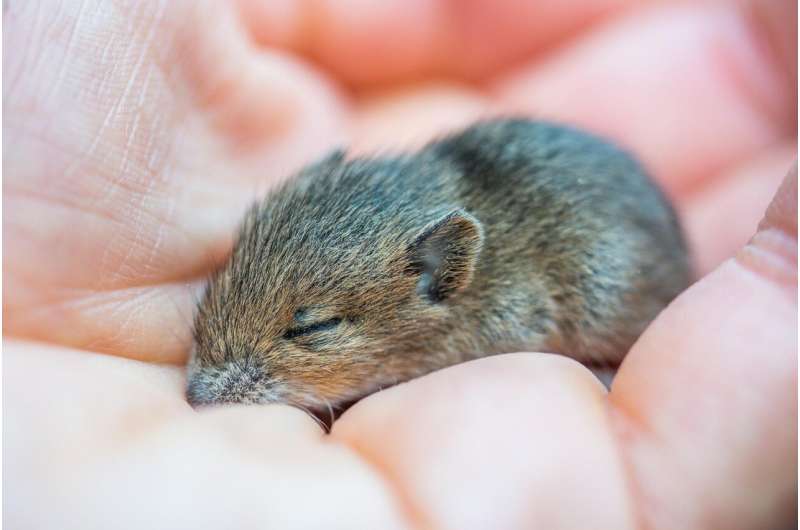Rapid eye movements during sleep reveal the dreams of mice

The rapid eye movements during a mouse's REM sleep provide more insight into the mechanism behind dreaming, a new study finds.
It appears that animals can dream too. This happens mostly during a period called REM sleep. During this dream sleep phase, the brain is very active, almost as active as the waking brain. But how exactly does this work in mice? And what are they dreaming of?
New research published in Science shows that the eye movements during the REM sleep of mice can tell quite a lot about the mechanisms behind dreaming. Neuroscientists Cathrin Canto and Chris de Zeeuw of Erasmus MC and the Netherlands Brain Institute are enthusiastic about the work of their colleagues, and continue on this topic.
"For the first time, we now have an objective measure for measuring dreams. You can wake up a human during REM sleep and ask what they were dreaming, but we had no way of checking that in mice. And, of course, a mouse cannot tell what it is dreaming at all," says Canto.
Head direction cells
The dreams can be measured by looking at the activity of the so-called head-direction cells in the brain. As the name suggests, the activity of these cells is linked to the direction in which the head moves: when the head is turned to the left, different activity is visible than when the head is turned to the right. Mice and other species, including humans, use head movements and changes in eye movements to learn how to stabilize gaze.
And when the mouse sleeps, these cells continue to work. In line with the evolutionary tight coupling between eye and head movements, Senzai and Scanziani found that the amplitude and speed of saccadic eye movements can predict physical head movement, without the mouse actually turning the head.
Dream function
The exact function of dreams is not yet fully understood, but it is thought that dreams are needed for reliving the events of the day. And this may also apply to the mice. Who knows, the mouse may follow a bird of prey moving through the air in its sleep. The mouse probably uses REM sleep to replay events of the day. In this way he strengthens his memory for movement. You can compare the brain connections to the path that water chooses. By letting water flow again and again, the path becomes wider and wider. During dreaming, the mouse can already practice escaping the bird, explain Canto and De Zeeuw.
It seems that humans show a similar mechanism. "We know, for example, that athletes who imagine new movements before going to sleep, learn those movements faster," says De Zeeuw. The discovery gives their field of research a completely new impulse. "If we can measure what someone is dreaming through eye movements, that offers opportunities to strengthen or weaken memories. This could for example be useful as a therapy for post-traumatic stress syndrome."
More information: Chris I. De Zeeuw et al, Interpreting thoughts during sleep, Science (2022). DOI: 10.1126/science.add8592
Yuta Senzai et al, A cognitive process occurring during sleep is revealed by rapid eye movements, Science (2022). DOI: 10.1126/science.abp8852



















